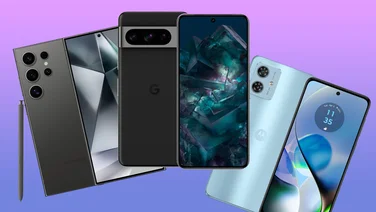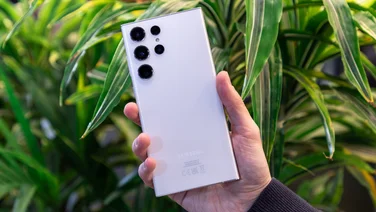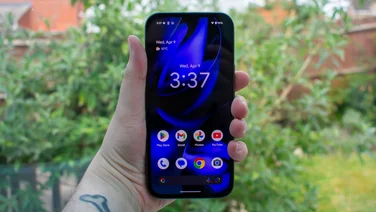To help us provide you with free impartial advice, we may earn a commission if you buy through links on our site. Learn more
- We test dozens of affordable smartphones every year, putting them through the same rigorous testing process assessing the build, display, performance, cameras, battery life and software experience.
- The Xiaomi Poco F7 has some of the best battery life you can get from a phone in this price range, thanks to its massive 6,500mAh battery.
- The IP68 dust and water resistance rating is far more robust than most competitors, too, offering flagship-level durability.
- While the main camera takes lovely photos, the results from night and ultrawide photography were unimpressive.
- Xiaomi’s software can be quite clunky, as well, with poorly designed menus and excessive bloatware preinstalled on the phone.
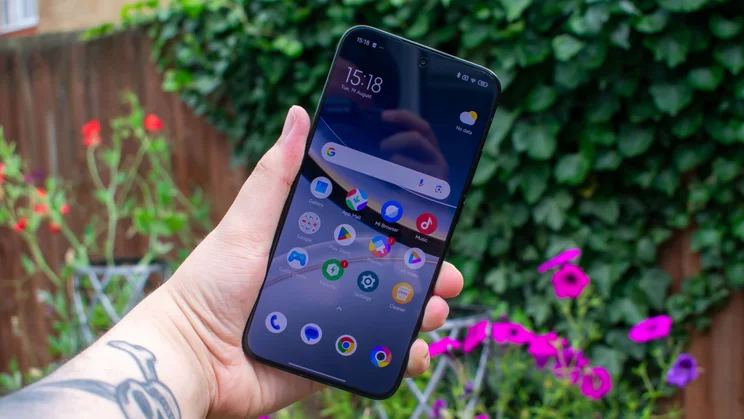
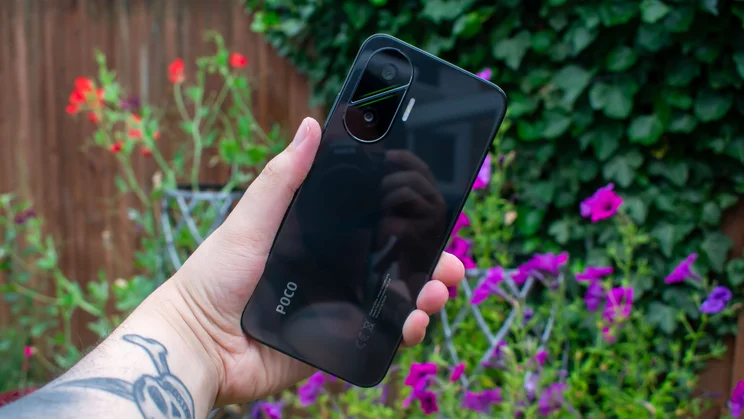
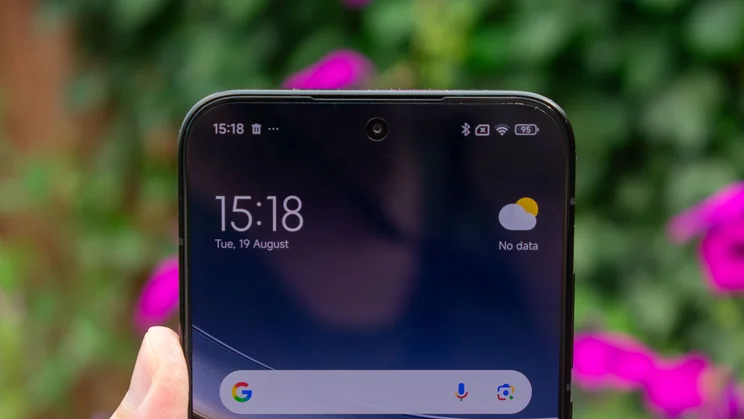
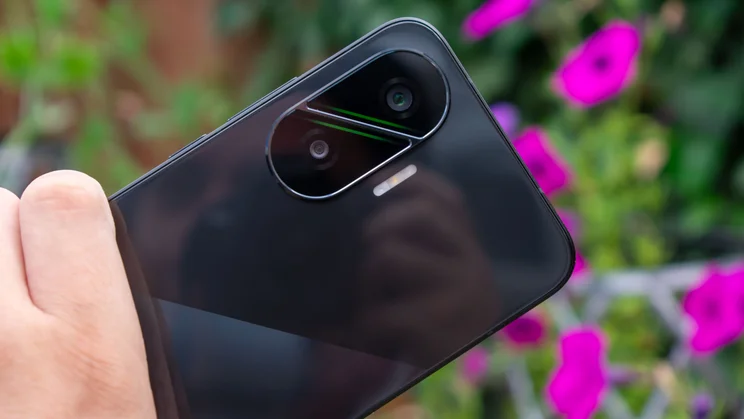
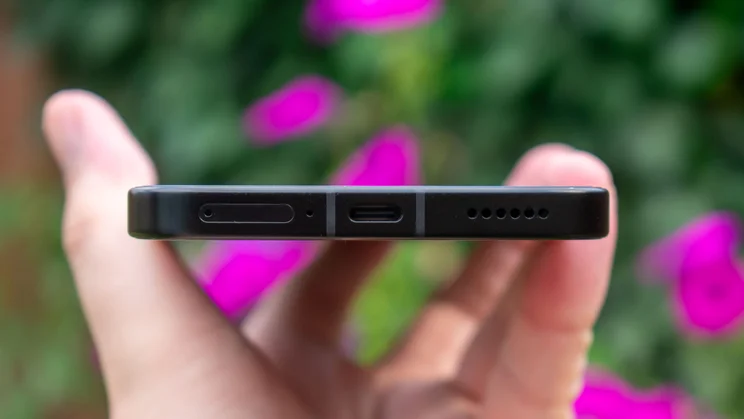
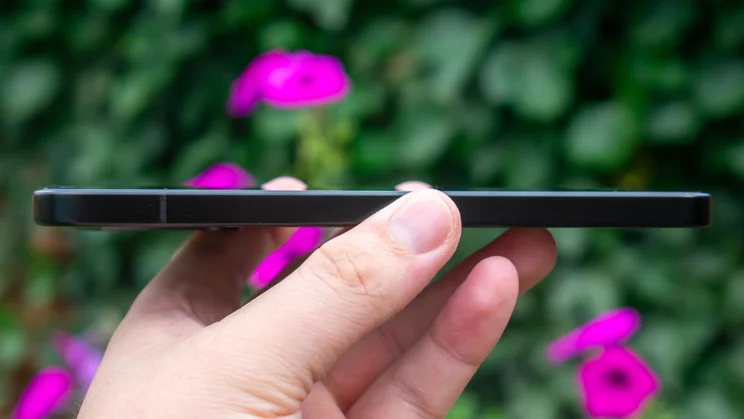
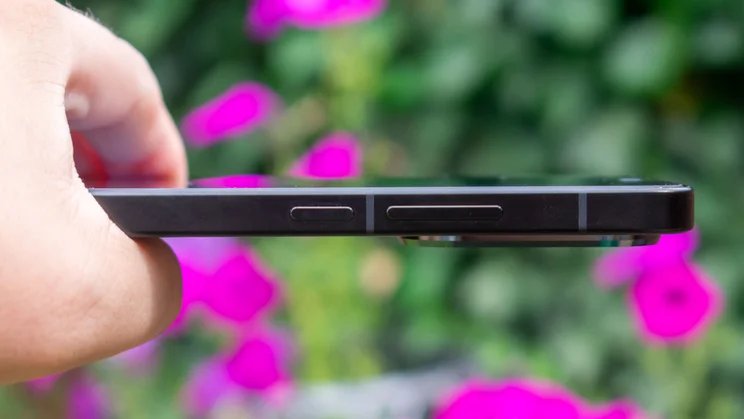
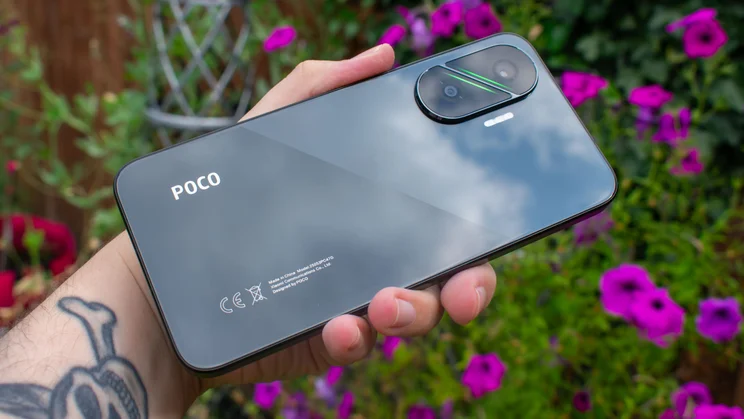
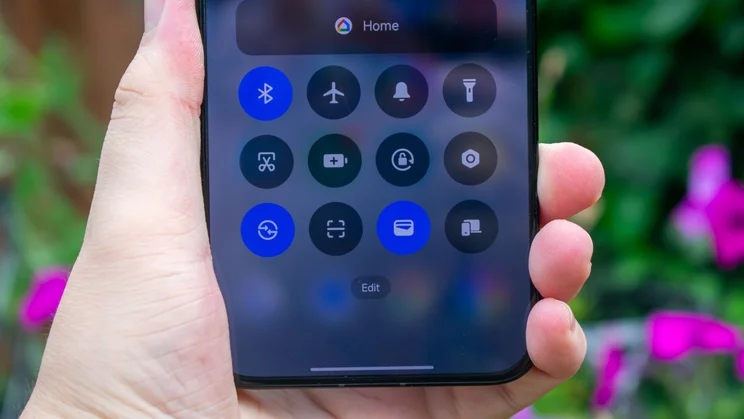









- Fast performance
- IP68 dust and water resistance
- Ridiculously good battery life
- Not the best software
- Middling secondary cameras
- Bland design
The Xiaomi Poco F7 is one of those products that makes you double-check the price tag. That’s because, while this is unashamedly a mid-range phone when it comes to looks, there’s a collection of seriously impressive components lurking inside.
From the massive 6,500mAh battery to the impressively powerful Snapdragon 8s Gen 4 chipset, the Xiaomi Poco F7 delivers the kind of performance that’s a cut above what we usually see from cheaper, mid-range phones like this.
Is it a complete winner? Of course not. Xiaomi’s software design leaves something to be desired and I would have liked to see better quality cameras. Even those bugbears can’t derail just how much value for money you’re getting here, though. The Poco F7 performs well above its weight class and has stamina to spare, delivering some of the best bang per buck around.
Xiaomi Poco F7: What you need to know
So, as established, the Xiaomi Poco F7 runs on the Snapdragon 8s Gen 4 chipset, which is clocked at 3.21GHz, backed by 12GB of RAM and either 256GB or 512GB of storage. The battery is a 6,500mAh cell that supports 100W wired charging. There’s no charger included, though, so you’ll need your own if you want to get the fastest speeds.


















The display is a 6.83in AMOLED unit with a resolution of 1,280 x 2,772 and a peak refresh rate of 120Hz. There’s a 20-megapixel selfie camera in a hole-punch notch near the top of the screen, while on the rear is a 50-megapixel main camera and an 8-megapixel ultrawide unit.
Price and competition
The Xiaomi Poco F7 originally retailed at £389 for the 256GB model and £429 for the 512GB version but prices are currently sitting at £329 and £379 respectively, and have been for some time now.
There is no shortage of rivals in this price range, with the heavy hitter being the Google Pixel 9a. This is my favourite mid-range phone overall, but the price starts a little higher, with the 128GB model costing £499. Closer in price to the Poco are the OnePlus Nord 5 (£399), the Nothing Phone (3a) Pro (£418) and the Honor 400, which is currently going for £344.


















Most interesting, however, is Xiaomi’s own Poco X7 Pro. It has a similar AMOLED display to the F7, the same camera loadout, a big 6,000mAh battery (albeit with fairly mediocre stamina in our testing) and performance that matches, and sometimes exceeds, the Poco F7. Best of all, it’s substantially cheaper – the 256GB model is £259 and the 512GB version is £299 if you buy direct from Xiaomi.
Design and key features
Plenty of competitors in this price range have plastic frames, plastic rears or both, so it’s good to see the Poco F7 making an effort go be a little more upmarket. The frame is aluminium and the rear is glass, which does feel higher-end than plastic. I’d have preferred frosted glass, though – this glossy finish is a nightmare for fingerprints.
The rear glass isn’t any kind of official scratch-resistant material but the display is clad in Gorilla Glass 7i. Dust and water resistance is excellent, as well, with an IP68 rating certifying the phone as fully dust-tight and able to withstand a 30-minute dunk in 1.5m of water. That’s flagship-level durability and, once again, great to see on such a cheap phone.


















Otherwise, the design is solid. It measures 78 x 8.2 x 163mm (WDH) and weighs 216g – unremarkable, but there’s nothing wrong here. There are three colours to choose from and they’re all fairly monochromatic. My review sample came in black and you can also get it in white or silver.
Features are decent, with speedy face unlocking via the selfie camera, an equally efficient fingerprint sensor under the display, and even an IR blaster on the top edge, allowing you to use the phone to control your TV. Connectivity is impressive, too. The Poco F7 supports both Wi-Fi 7 and Bluetooth 6.0 versions, which some phones that cost twice this price don’t offer.
I’m less enthusiastic about the software. The Poco F7 runs on Xiaomi’s HyperOS 2, layered over Android 15. This launcher is generally pretty responsive and feels fluid and recently it has had some improvements added – you can now opt to have an app drawer accessible from the homescreen during set up, for example – but it still has its issues. For one, there’s far too much bloatware, with junk like Temu and Booking.com clogging up the home screen.


















Another thing that confounds me about HyperOS is that the shortcut to the main settings page has been shuffled into the control centre tiles, along with the likes of airplane mode and the torch toggle – none of which are labelled, by the way. This makes popping into the settings more of a scavenger hunt than it needs to be. Other brands keep general settings separate from the rest of the quick-launch tiles for a reason, and Xiaomi going the other way with it just feels obtuse.
On the bright side, the Poco F7 is set for four years of OS updates and six of security patches, which is exactly the same as the OnePlus Nord 5 and better than the Poco X7 Pro (three years OS, four years security). The Honor 400 and Google Pixel 9a have better software roadmaps, with six and seven years of both, respectively, but this is still a decent offering for the Xiaomi Poco F7.
Display
We’re back on the positives with the display, which pairs the effectively perfect black and contrast levels of an OLED panel with impressive brightness. In manual mode, I recorded the peak at 605cd/m2 with the slider all the way up, while switching to adaptive mode and shining a torch on the light sensor pushed it up to 948cd/m2. HDR content revealed the screen at its brightest, though, where it soared to an outstanding peak of 1,506cd/m2.


















Colour accuracy proved impressive, as well. The phone provides a total of six colour profiles to choose from – Original Colour Pro, Vivid, Saturated, Original, sRGB and DCI-P3 – but odds are you’ll be fine sticking with the default Original Colour Pro, as it adjusts the vibrancy based on the content onscreen.
On this profile, I recorded an sRGB gamut coverage of 95.5% with a volume of 97.6%, and the average Delta E colour variance score came back a 1.12 – our target is 1 or under, so this is brilliant. Only the Advanced sRGB profile proved any more accurate, with a phenomenal Delta E of 0.84.
Performance and battery life
As I’ve already heavily alluded to, the Poco F7’s greatest strength is its raw speed. In the Geekbench 6 tests, it flew far ahead of most of the competition, with only fellow Xiaomi stablemate, the Poco X7 Pro, keeping pace with it.
This translates to impressively nippy performance, hopping between screens with seamless efficiency and launching app after app without a hint of lag. Paired with the smooth 120Hz refresh rate of the display, scrolling is also wonderfully fluid.
It’s not such a clean sweep on the gaming side of things, with the Pixel 9a and OnePlus Nord 5 delivering higher framerates in the onscreen portion of the GFXBench test, but it’s worth remembering that both are more expensive than the Poco F7. And, even then, it achieved one of the highest offscreen results, coming second only to – you guessed it – the Poco X7 Pro.
In practice, the Poco F7 is more than capable of handling intensive 3D games. I ran Genshin: Impact on the default graphics settings and it ran with no notable instances of lag or stuttering.
As impressively powerful as the Poco X7 Pro was back when we reviewed it, it didn’t particularly impress us in our standard looping video battery rundown test. Here, the Poco F7 finally outshines its older sibling, delivering some of the best battery life I’ve seen in this price range.
Lasting for an outstanding 30hrs 38mins, the Poco F7 makes full use of that massive 6,500mAh battery, standing alongside the Google Pixel 9a and OnePlus Nord 5 as the mid-range stamina champions.
The Poco F7 technically supports charging speeds of up to 90W, but you’ll need one of Xiaomi’s own chargers to get that speed. With my 125W Motorola adapter, I only saw it go as high as 25W. That’s still fine, bringing the battery from empty to 50% in around 30mins, but if you do have a Xiaomi plug, the brand claims that the same 30 minutes will take the battery from 0 to 80%.
Cameras
Xiaomi must have bought these camera units in bulk because the setup here is exactly the same as the Poco X7 Pro and the Poco X7 – although the latter also stuffed in a superfluous 2-megapixel macro sensor.
It’s disappointing to see the F7 offering the same photographic experience as two much cheaper phones – the standard Poco X7 can be picked up for as little as £194 at the time of writing – but the 50-megapixel main camera, at least, is a very competent shooter.
Between the wide f/1.5 aperture and the optical image stabilisation (OIS), the sensor is able to take in plenty of light, delivering bright, detailed shots in good light. The colours might be a little overexaggerated for some people’s tastes but, if you enjoy your photography with larger than life vibrancy, you’ll get on just fine with this camera.

It’s not quite as impressive after dark, with a fair bit of visual noise visible in dark areas like the sky, but it’s ok for a phone of this price. It manages to pull some detail from the shadows and the colours don’t feel distractingly different to daylight shots, either.

Speaking of colour fidelity, the 8-megapixel (f/2.2) ultrawide lens does a fine job at mimicking the tone of the main camera – but it’s otherwise a disappointing camera, with weaker contrast and fairly mediocre detail.

The 20-megapixel selfie camera has a mildly ghoulish beautifying effect applied as standard but, once you disable that, selfie shots are decent enough. Skin tones are natural looking and the focus around the subject is reasonably sharp.
Finally, video is very good, capturing clips at up to 4K and 60fps. This is far from guaranteed around this price – both the Honor 400 and the Nothing Phone (3a) Pro, for instance, only go up to 4K at 30fps. Topping things off, you get OIS support here, too, albeit only up to 1080p at 30fps.
Xiaomi Poco F7: Verdict
There are a few areas in which the Xiaomi Poco F7 feels dangerously close to the cheaper X7 Pro – the cameras are identical, the display is roughly the same and even that excellent performance is matched across the board.
So why spend more on the Poco F7 over the Poco X7 Pro? Two main reasons, and they both boil down to longevity. First of all, there’s that fantastic battery life. The X7 Pro underperformed in our testing, while the F7 is an overachiever, offering truly stamina at a highly affordable price. Throw in superior software support and the Poco F7 just about manages to justify being more expensive than its similar sibling.
As for the rest of the competition, the Pixel 9a remains the best all-round mid-range phone you can buy – but it is quite a bit more expensive than the Poco F7. If your main concerns are performance and stamina, you can get everything you need at a dirt-cheap price with the bargain Poco F7.



